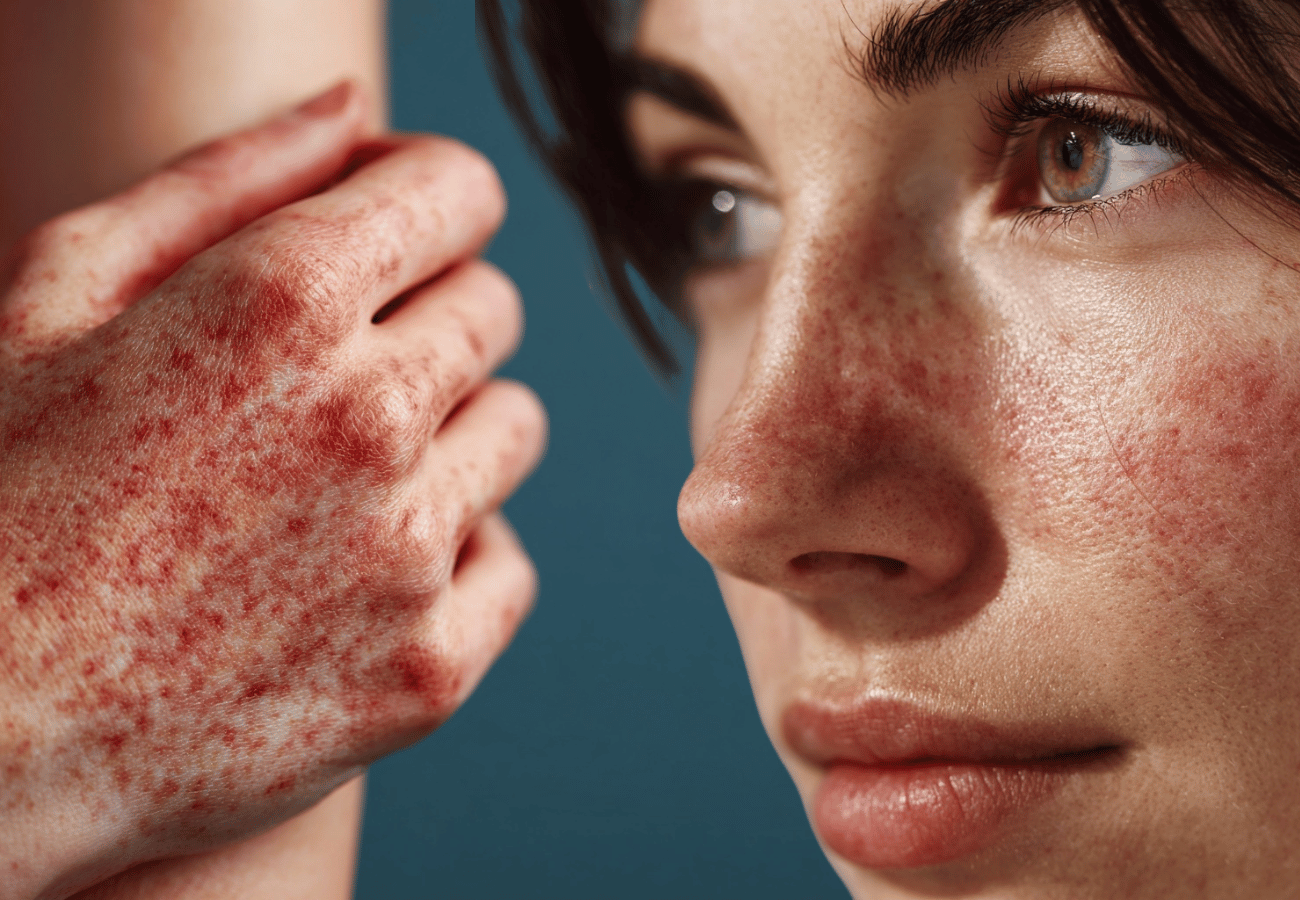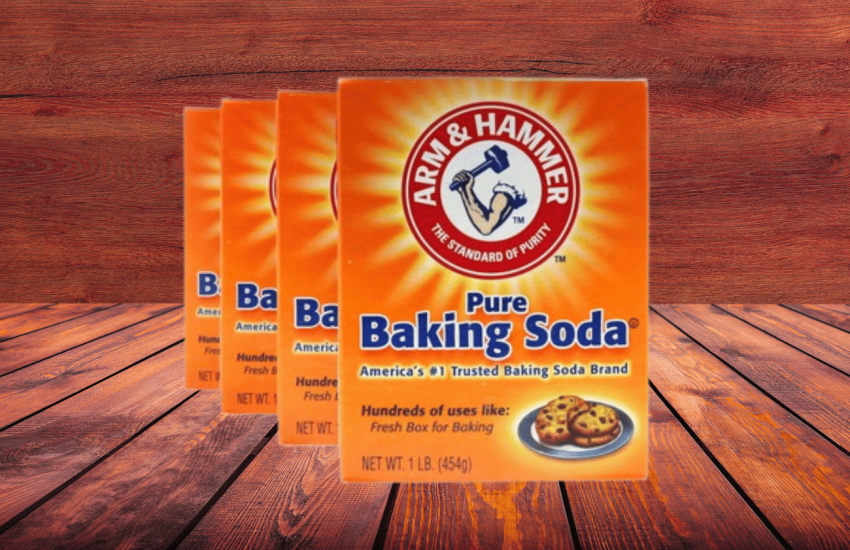Do You Have Red Spots on Your Skin? Causes, Risks, and When to Worry
Meta Description: Red spots on skin can signal anything from harmless aging to serious conditions. Learn causes, warning signs, and when to see a doctor.
Introduction
Have you ever noticed mysterious red spots appearing on your skin and wondered what they mean? You’re not alone. Red dots on the body are one of the most common dermatology concerns that send people searching for answers online. These small red spots on arms or legs, chest, or back can range from completely harmless to indicators of underlying health issues that require medical attention.
The appearance of red marks on your skin can trigger anxiety, especially when you’re unsure about their origin. Some red spots on skin are not itchy and seem to appear out of nowhere, while others might be accompanied by discomfort or changes in texture. Understanding the various causes of red spots, recognizing potential warning signs, and knowing when to worry about red spots can empower you to take control of your skin health.
In this comprehensive guide, we’ll explore everything you need to know about those puzzling red dots on your body—from benign conditions like cherry angiomas to more serious concerns that warrant immediate medical attention. Whether you’re dealing with petechiae, birthmarks, or unexplained skin rash causes, this article will help you navigate the complex world of skin health with confidence and clarity.
Understanding Red Spots on Skin: What Are They?
Red spots on skin appear in various forms, sizes, and patterns. They can be flat or raised, clustered or scattered, temporary or permanent. These skin manifestations occur when blood vessels dilate, break, or grow abnormally near the skin’s surface, or when the skin experiences inflammation or irritation.
The medical term for red spots depends on their characteristics. Small, pinpoint red or purple spots are called petechiae, while larger flat red areas might be classified as purpura. Raised red bumps could be papules, and dome-shaped, bright red growths are often cherry angiomas.
Understanding your specific type of red marking is the first step toward proper identification and treatment. The location, size, texture, and accompanying symptoms all provide valuable clues about what’s happening beneath your skin’s surface.
Common Causes of Red Spots on Your Body
Cherry Angiomas: Harmless Red Bumps
Cherry angiomas are among the most common causes of red dots on skin, especially as we age. These small, bright red or purple bumps typically appear on the torso, arms, legs, and shoulders. They’re composed of clusters of small blood vessels and are completely benign.
These growths usually develop after age 30 and become increasingly common with advancing years. While their exact cause remains unclear, genetics and age-related changes in blood vessels play significant roles. Cherry angiomas don’t require treatment unless they bleed frequently or you find them cosmetically bothersome.
Petechiae: Tiny Red Dots That Demand Attention
Petechiae appear as pinpoint-sized red or purple spots that don’t blanch (turn white) when you press on them. These small red spots on arms or legs occur when tiny blood vessels called capillaries break and leak blood into the skin.
Common petechiae and cherry angiomas might look similar at first glance, but petechiae are flat and much smaller. They can result from minor causes like straining during vomiting or coughing, but they can also indicate serious conditions including blood clotting disorders, infections, or reactions to certain medications.
Heat Rash and Allergic Reactions
Heat rash causes small red bumps that typically appear in skin folds and areas covered by tight clothing. These red marks on chest or back often develop during hot, humid weather when sweat ducts become blocked.
Allergic reactions can trigger various types of skin rash causes, from hives (raised, itchy welts) to contact dermatitis (red, inflamed patches). Common allergens include certain foods, medications, cosmetics, plants like poison ivy, and insect stings.
Keratosis Pilaris: “Chicken Skin” Bumps
This common condition creates small red or flesh-colored bumps, typically on the upper arms, thighs, cheeks, or buttocks. Keratosis pilaris occurs when excess keratin (a protein that protects skin) blocks hair follicles. While harmless, many people find it cosmetically concerning.
Spider Angiomas and Broken Capillaries
Spider angiomas (also called spider veins) are small red dots with radiating lines that resemble spider legs. They commonly appear on the face, neck, chest, and arms. While often harmless, multiple spider angiomas can sometimes indicate liver disease or hormonal changes during pregnancy.
When to Worry About Red Spots: Warning Signs
Not all red spots on skin require emergency attention, but certain characteristics should prompt immediate medical evaluation:
Red Flags That Need Urgent Care
Petechiae accompanied by fever or illness – This combination could indicate a serious infection like meningitis or a blood disorder that affects clotting.
Rapidly spreading rash with fever – This pattern might signal cellulitis, a bacterial skin infection, or other systemic infections requiring antibiotics.
Purple or black spots – Darkening spots that don’t blanch when pressed could indicate bleeding disorders, vasculitis (inflamed blood vessels), or reduced blood flow.
Red spots with severe pain or swelling – This combination might indicate infection, inflammation, or vascular problems.
Spots appearing after starting new medication – Drug reactions can range from mild to life-threatening conditions like Stevens-Johnson syndrome.
Accompanied by difficulty breathing, dizziness, or swelling – These symptoms suggest a severe allergic reaction (anaphylaxis) requiring emergency treatment.
Skin Health Warning Signs Beyond Red Spots
Understanding broader skin health warning signs helps you maintain overall dermatological wellness. Watch for these additional concerns:
- Changes in existing moles (size, shape, color, or borders)
- New growths that bleed easily or don’t heal
- Persistent itching or pain in specific areas
- Sudden appearance of multiple new spots
- Texture changes like thickening or unusual softness
- Spots that change appearance rapidly
Regular self-examinations help you notice changes early when treatments are most effective.
Dermatology Tips for Managing Benign Red Spots
For Cherry Angiomas and Age-Related Spots
While these don’t require treatment, you can have them removed for cosmetic reasons through:
- Laser therapy
- Electrocauterization
- Cryotherapy (freezing)
- Excision (surgical removal)
Always consult a dermatologist before removing any skin growth to ensure proper diagnosis.
For Heat Rash and Minor Irritations
Manage these conditions with simple measures:
- Keep affected areas cool and dry
- Wear loose, breathable clothing made from natural fibers
- Avoid heavy creams that might block pores further
- Use calamine lotion or hydrocortisone cream for itch relief
For Keratosis Pilaris
This stubborn condition responds well to:
- Regular exfoliation with gentle scrubs
- Moisturizers containing lactic acid, urea, or salicylic acid
- Avoiding harsh soaps that strip natural oils
- Using a humidifier during dry winter months
Natural Skin Remedies for Red Spots and Rashes
Many mild skin conditions respond favorably to natural approaches:
Aloe Vera
This soothing plant gel reduces inflammation and promotes healing for irritated skin. Apply pure aloe vera gel directly to affected areas two to three times daily.
Oatmeal Baths
Colloidal oatmeal soothes itchy, inflamed skin by forming a protective barrier and reducing inflammation. Add finely ground oatmeal to lukewarm bathwater and soak for 15-20 minutes.
Coconut Oil
With natural antimicrobial and anti-inflammatory properties, virgin coconut oil moisturizes dry, irritated skin while creating a protective barrier. Apply thin layers to affected areas after bathing.
Cold Compresses
For acute inflammation or itching, cold compresses constrict blood vessels and numb nerve endings, providing immediate relief. Apply for 10-15 minutes several times daily.
Apple Cider Vinegar
Diluted apple cider vinegar (one part vinegar to three parts water) can help restore skin pH balance and reduce inflammation for certain rashes. Always perform a patch test first, as some skin types may react negatively.
Chamomile Tea Compresses
Chamomile’s anti-inflammatory and antimicrobial properties soothe irritated skin. Steep chamomile tea, let it cool, and apply with a clean cloth to affected areas.
Important Note: Natural remedies work best for mild, non-serious conditions. If red spots persist, worsen, or come with concerning symptoms, seek professional medical evaluation before relying solely on home treatments.
Prevention: Protecting Your Skin Health
Preventing many types of red spots and maintaining overall skin health involves consistent, thoughtful care:
Daily Sun Protection
UV damage contributes to various skin changes including broken capillaries and age-related spots. Apply broad-spectrum sunscreen (SPF 30+) daily, even on cloudy days, and reapply every two hours during prolonged sun exposure.
Gentle Skincare Routine
Harsh products strip natural oils and compromise your skin’s protective barrier:
- Use mild, fragrance-free cleansers
- Avoid hot water; opt for lukewarm temperatures
- Pat skin dry rather than rubbing vigorously
- Apply moisturizer while skin is still slightly damp
Healthy Lifestyle Choices
Your skin reflects your overall health:
- Stay hydrated by drinking adequate water throughout the day
- Eat a balanced diet rich in antioxidants, vitamins, and omega-3 fatty acids
- Manage stress through exercise, meditation, or other relaxation techniques
- Get sufficient quality sleep (7-9 hours for most adults)
- Avoid smoking and excessive alcohol consumption
Regular Skin Checks
Perform monthly self-examinations to notice changes early. Use the “ABCDE” rule for evaluating spots:
- Asymmetry: One half doesn’t match the other
- Borders: Irregular or poorly defined edges
- Color: Varied colors or unusual hues
- Diameter: Larger than a pencil eraser (6mm)
- Evolving: Changing in size, shape, or color
Schedule annual skin checks with a dermatologist, especially if you have risk factors like fair skin, family history of skin cancer, or significant sun exposure history.
When to See a Dermatologist
Schedule an appointment with a skin specialist if you experience:
- Red spots that persist for more than two weeks without improvement
- Spots that bleed easily or won’t heal
- Sudden appearance of numerous new spots
- Red marks accompanied by joint pain, fatigue, or fever
- Concern about any skin change, even if it seems minor
Dermatologists have specialized training to distinguish between harmless conditions and those requiring treatment. They can perform biopsies if necessary, provide accurate diagnoses, and recommend appropriate treatment plans.
Early professional evaluation often prevents complications and provides peace of mind when you’re uncertain about skin changes.
Understanding Different Types of Red Marks by Location
Red Dots on Skin Not Itchy on the Chest and Torso
Non-itchy red spots on the chest frequently indicate cherry angiomas, spider angiomas, or small broken blood vessels. These typically relate to aging, sun damage, or genetic factors rather than allergic or infectious causes.
Small Red Spots on Arms or Legs
When red dots appear on limbs, consider keratosis pilaris, cherry angiomas, folliculitis (inflamed hair follicles), or petechiae. Location patterns help narrow diagnostic possibilities—for instance, keratosis pilaris favors upper arms, while petechiae from standing pressure might concentrate on lower legs.
Red Marks on Back
The back commonly develops heat rash, folliculitis, or acne-related inflammation due to friction from clothing, sweat accumulation, and difficulty reaching the area for proper cleansing. Back acne (bacne) creates red bumps that may or may not be accompanied by white or blackheads.
The Mind-Body Connection and Skin Health
Your skin often reflects internal health and emotional wellbeing. Chronic stress, anxiety, and poor mental health can trigger or worsen inflammatory skin conditions. Stress hormones like cortisol increase inflammation throughout the body, potentially manifesting as skin rashes, hives, or worsening of existing conditions.
Managing mental health through therapy, mindfulness practices, adequate sleep, and stress-reduction techniques often improves skin appearance alongside other health benefits. This holistic approach recognizes that skin health extends beyond topical treatments to encompass whole-person wellness.
Conclusion: Taking Control of Your Skin Health
Red spots on skin represent a diverse group of conditions ranging from completely harmless age-related changes to potentially serious medical concerns. Understanding common causes of red spots—including cherry angiomas, petechiae, heat rash, and allergic reactions—empowers you to respond appropriately when these marks appear.



